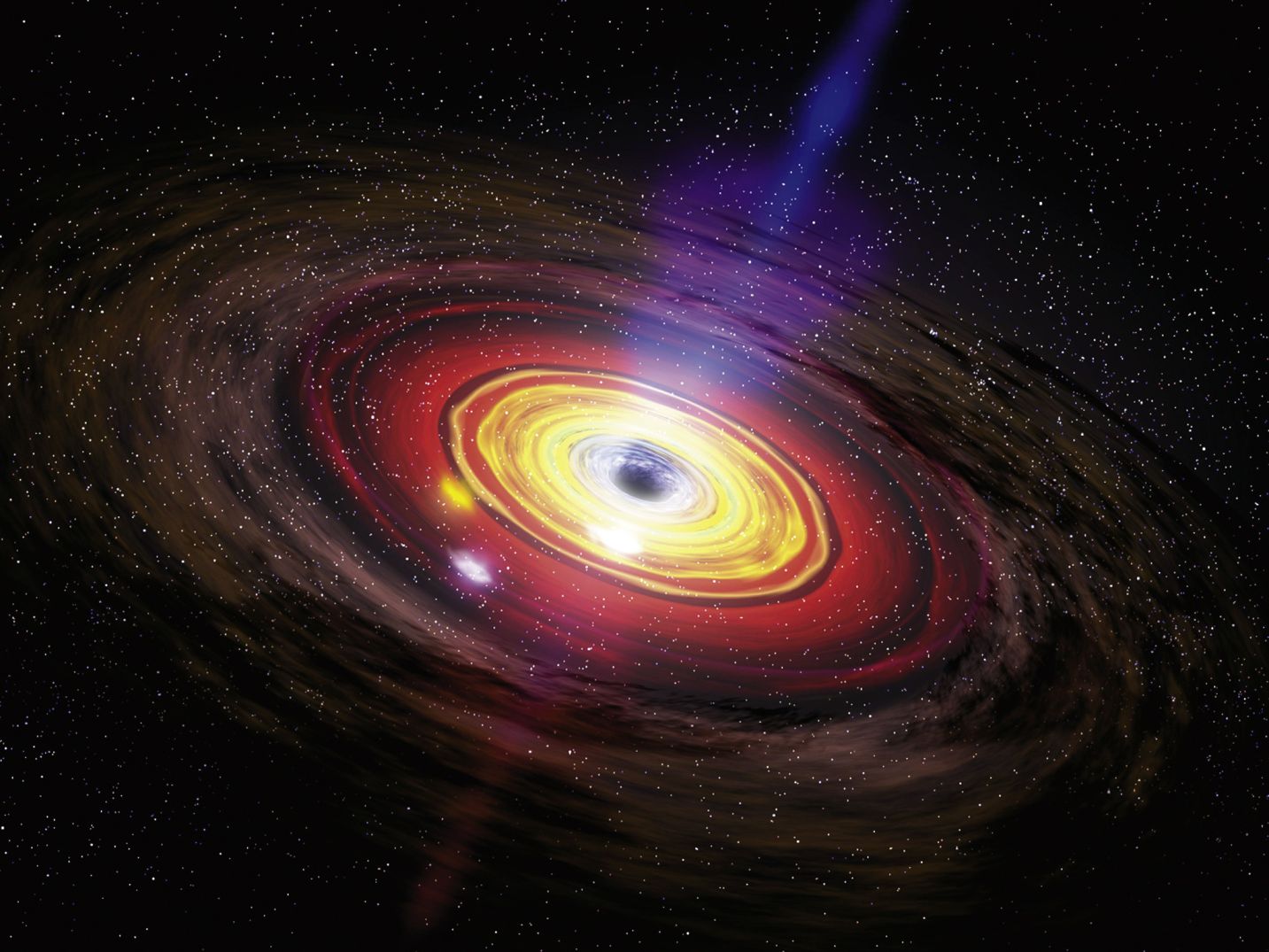When looking at an image of a galaxy, its center looks so bright. Do you know why the center of the galaxy is so bright when there is said to be a supermassive black hole there? Shouldn’t it be dark?
Let’s go back to 1974, when the British physicist Sir Martin Rees proposed the idea that a supermassive black hole might exist at the center of every galaxy in the universe.
In the last 20 years, the existence of supermassive black holes proposed by Sir Martin Rees seems to be true, in fact a lot of evidence has been found.
One of the proofs is, astronomers see that the stars, gas, and other material in the central area of the galaxy are moving in unusual orbital motions, which are affected by large, invisible gravitational objects.
However, even though there is a supermassive black hole there, that doesn’t mean the center of the galaxy has to be dark, you know. Supermassive black holes are also not some kind of “vacuum cleaner” that will suck up anything throughout the galaxy.
At the center of our own galaxy, there is a known supermassive black hole 4.6 million times the mass of our Sun known as Sagittarius A*. Despite its massive mass, Sagittarius A* still seems to be nothing compared to the sheer number of stars in the area around it.
Actually, what is a supermassive black hole? Simply put, a black hole is a huge amount of mass packed into a tiny space, much smaller than an object made of atoms or other particles. Well, because black holes are very small in size but very massive in mass, the black hole’s density is very high, making it have a strong gravitational pull so that even light cannot escape.
However, black holes are not as extreme as we often think. It doesn’t suck anything around it. Due to the fact that black holes have what is known as an event horizon, the boundary that marks the point of no return after being sucked in by the black hole.
If we were beyond the event horizon, the black hole would be just like any other object with the same mass. It doesn’t have the magical power to suck things up. Its gravity works in the same way as the gravity of other objects in the universe.
For example, if the Sun were suddenly replaced by a black hole with the exact same mass: then our Earth would be safe from the black hole’s tug, and would continue to orbit the black hole instead.
Sagittarius A*, the supermassive black hole at the center of the Milky Way, works the same way. With a mass of 4.6 million times the mass of the Sun, Sagittarius A* is known to be only 25 million kilometers in diameter, less than half the size of Mercury’s orbit.
Any star that enters the Sagittarius A* event horizon will be sucked in. However, any star that is far away or beyond its event horizon will only orbit very quickly.
Well, the center of the galaxy looks bright because it is inhabited by old yellow stars. In addition, these stars are very numerous, and are gathered in a narrow area. Just imagine, within 1 parsec (3.26 light-years) from the galactic center, the estimated total star density is about 10 million stars per cubic parsec.
This is clearly in stark contrast to the stellar density in the neighborhood around our Sun, which is only about 0.2 stars per cubic parsec. Now, because the stars are so close together at the galactic center, the average distance between the stars is estimated to be only 1,000 AU (about one light week).
If the Sun were in the center of the galaxy, we would see a million stars in the night sky that were brighter than Sirius!
At this point, we know that too many bright stars in the galactic center are beyond the Sagittarius A* event horizon. This is what makes the center of our galaxy, and other galaxies, appear bright, not dark because of the black hole.
More on Education









